Macará, Ecuador to Chiclayo, Peru
- on 02.14.09
- Ecuador, Peru
- No Comments
- Digg
- Del.icio.us
Tuesday, February 3rd
It felt like it had been ages since we crossed into Ecuador so anticipation was high for a border crossing. I actually felt rusty about the procedure, but we’d read this was going to be a very chill crossing that wouldn’t take too much time. We had breakfast at the hotel, went to the bank for our last easy access to US dollars, and packed the bikes.
After refueling the bikes, we were off on the 5 minute ride to the border. I think this was the first time we had stayed in a border town before a crossing, and it makes the day very stress free. The border was indeed a small, quiet crossing. It only took a few minutes to get stamped out of Ecuador and through immigration on the Peruvian side. At the aduana, our customs officer was an elderly gentleman who was clearly not in a hurry. As he processed our paperwork it seemed like it was the first time he’d ever done it before as he laboriously filled out the forms. I was surprised at how informal the Peruvian paperwork was as the principle immigration document was printed on a single sheet of paper and then torn into 3 sections by hand once filled out.

All in all, the border crossing took about an hour, and we were on our way. We were under 2000 ft in elevation, the lowest we had been on the motorcycles since Panama. The vegetation was a darker shade of green, and instead of the smooth green grass covered hills, the hillsides in this part of Peru were fuzzy looking, covered in short trees and bushes.
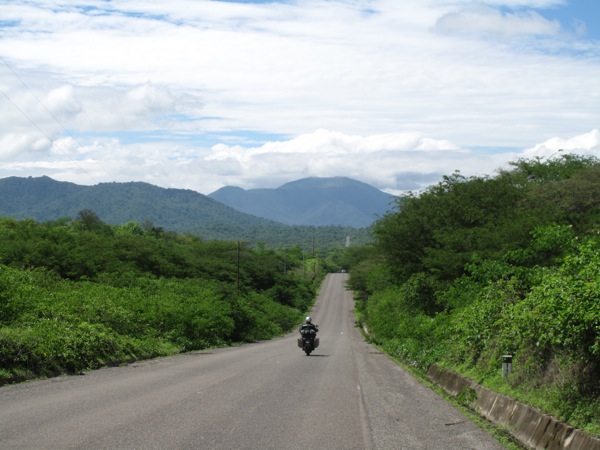
We worked our way south cautiously. We had read reports of numerous highway police waiting in ambush for real or otherwise speeding violations as an excuse to get a bribe. We actually did see a lot of police parked on the roadside near the entrance and exits of the small villages, but we were so paranoid in obeying the absurdly low speed limits we made it through without incident.
In less than 100 miles, we had descended to sea level and left the vegetation behind us. Due to the rain shadow of the Andes, the western half of Peru is desert. The vegetation becomes smaller and more dispersed the farther south we rode.
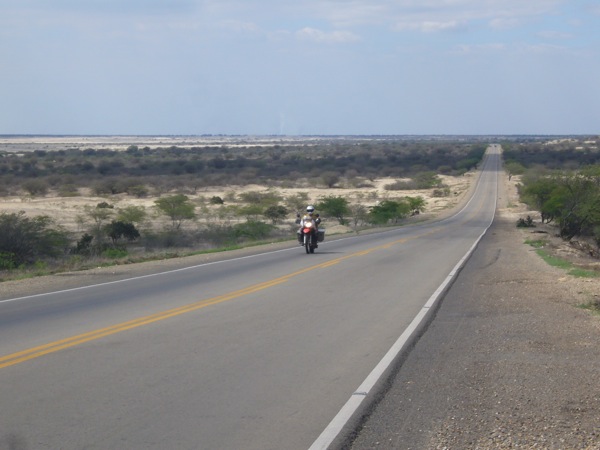
We stopped in Piura to find an ATM to acquire Peruvian Soles and fill up our tanks. We had a gas station lunch of water, gatorade, chips, and fruit. The town served as our proper introduction to the Peruvian tuk tuks, the three wheeled motorbike taxis that are omnipresent on the streets. One of them kindly offered to trade bike with me but I declined. It would be too comfortable having all that space.
It took a few tries to find the right road out of town as more than one is called the Panamerican, or 1. We finally got it right and entered a long desert stretch. The vegetation went from minimal to non existent. The landscape was just dirt, rock, and sand dunes which occasionally blew sand across the highway.
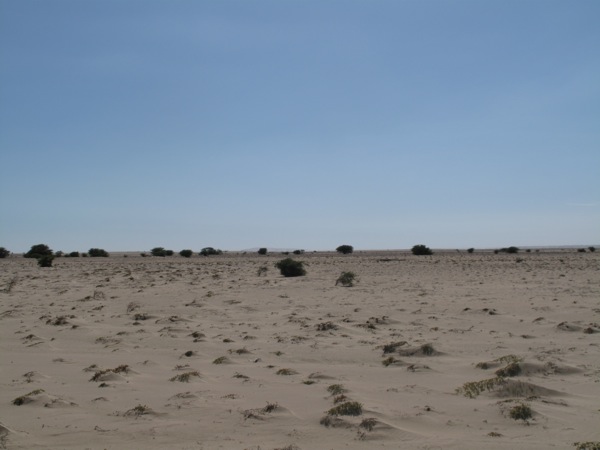
At first it was a pleasant change of scenery, as both Inna and I are fans of desert landscapes, but after 100 miles of it, the ride became more of a straight line grind in the heat. The wind picked up to give us something to worry about, and the last 50 miles or so were spent leaned into the wind.
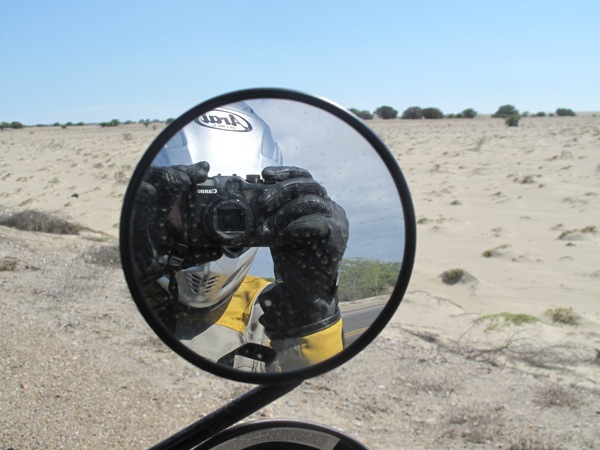
We arrived in late after in Chiclayo, our stopping point for the night. On the main road into town, we stopped at a Yamaha dealer to buy more oil for Inna’s bike. With no hope of fixing the leak, we needed to keep an ample supply on hand. We’d also run out of chain lube, but they didn’t sell it. The mechanic displayed the usual above and beyond kindness and led us a few blocks away to a shop that should have had it, but didn’t. He told us we could come back in the morning and he’d find it somewhere else. We are constantly amazed at the kindness shown to us by strangers.
Once safely parked in our nice but very stuffy hotel room, we headed out for dinner. Chiclayo was a real culture shock compared even to Quito. The sidewalks were packed with people, and the streets packed with cars and taxis. The sounds of honking and strange car sirens created an ever present cacophony. It actually felt like we were in New York with so much hustle and bustle on the street.
The sidewalks felt like a mass of people always going the opposite direction that we wanted to go. Apparently all everyone does in Chiclayo is take pictures and then talk about it on the phone. I’ve never seen so many photo stores in one place, and if it wasn’t a photo store, it was probably a cell phone store. The other 20% are shops and restaurants.

We tried a restaurant from the book, hoping to get the local specialty, arroz con pato, a duck dish. The first restaurant we tried said they had no duck, so we went to another, more bustling place. No duck either, we presume it’s out of season and are seated to choose something else. I try chicharrones de pollo, which I discover means chopped into little bits and fried. Inna orders arroz con mariscos, a huge, huge pile of seafood and rice.
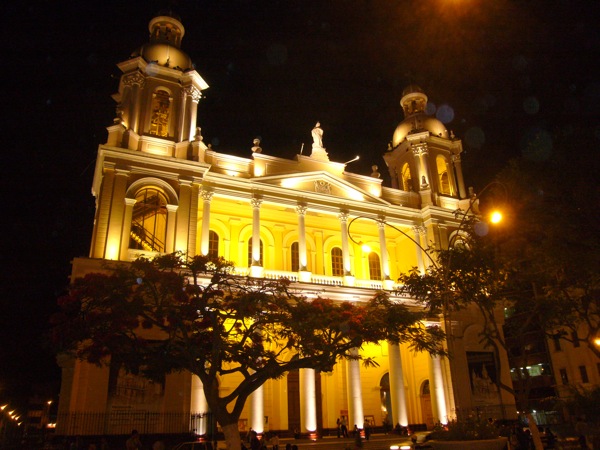
Our restaurant includes a walk up hamburger stand. The man making the burgers was a real burger machine, laying out 16 buns topped with french fries. He then goes to work rapidly making various different kinds of burgers – chicken, meat and pork. He was in demand as the line was never less than six persons deep and usually twice that many. Sitting there watching him crank out the burgers actually made us regret not ordering them instead as they looked great and were clearly highly popular.
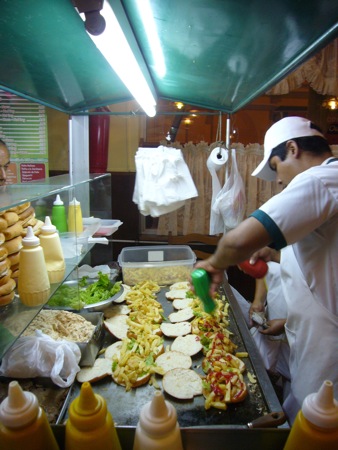
After dinner, it was back to the room to watch some cable news, do some writing, and sleep.
Leave a Reply
You must be logged in to post a comment.